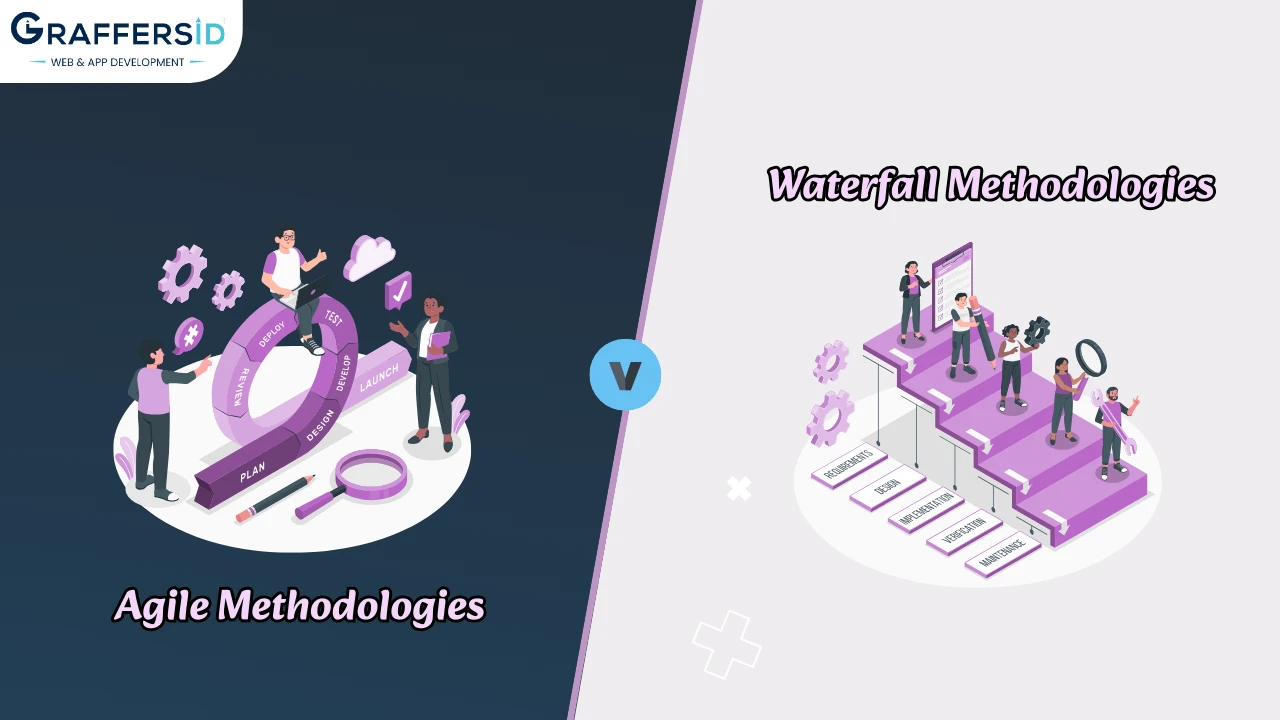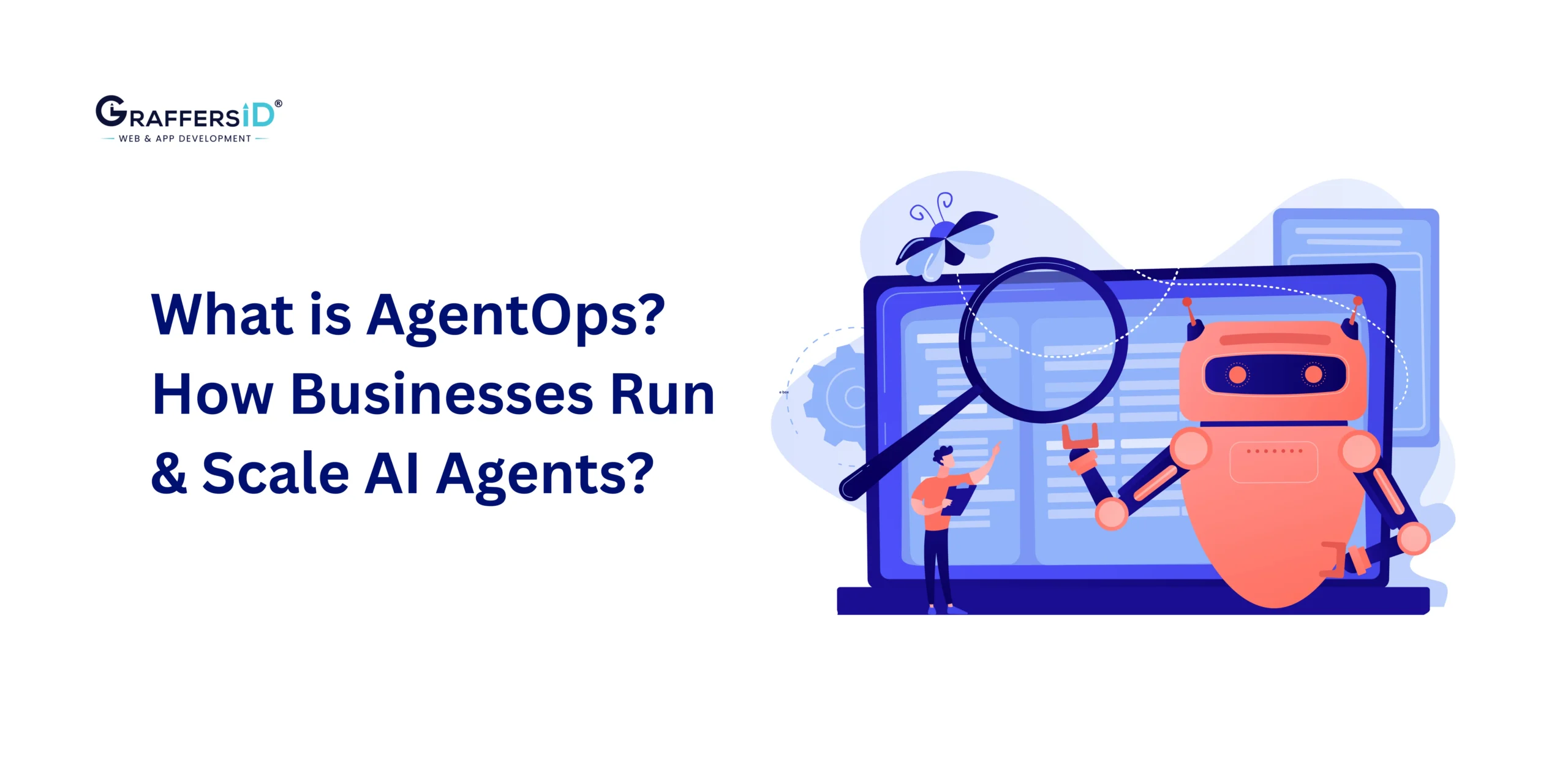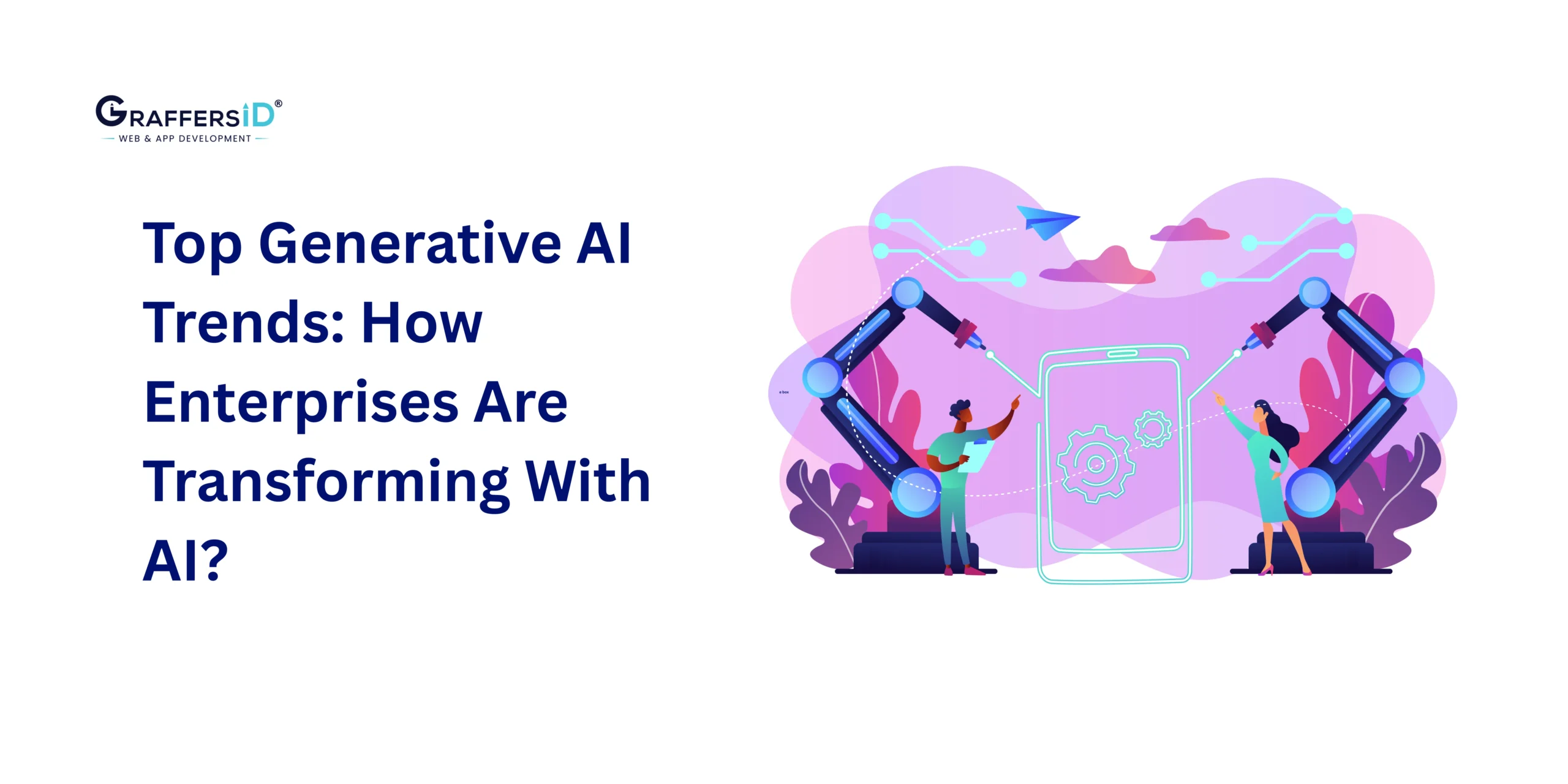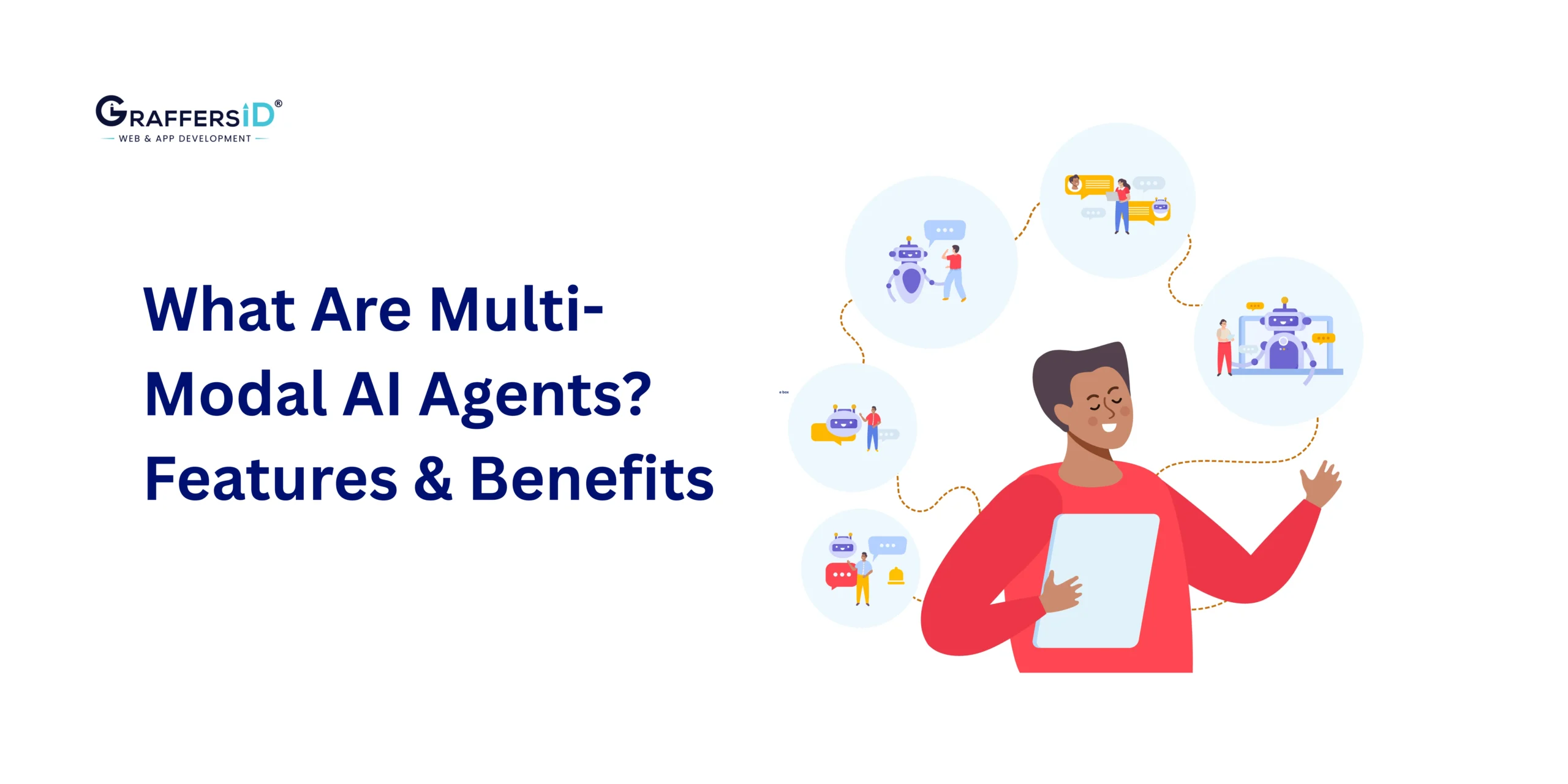If you are into software development, you must have heard about the two methodologies Agile and Waterfall, and also the importance of selecting the right methodology can significantly impact the success of a project. Interestingly, they both have unique principles, strengths, and weaknesses. Now we know you are curious to understand their key differences. That is why, we have come up with guidance on both methodologies. In the article, you get to learn about Agile vs Waterfall methods and their origins, history advantages, disadvantages, and popular frameworks. Read along.
What is Agile Methodology?
Agile methodology has a rich history. It was first heard in the early 2000s as a response to traditional project management methods because these methods often failed to accommodate the rapid changes and uncertainties inherent in software development and the frustration of handling projects and these shortcomings led a group of 17 software developers to convene and create a new set of guiding principles.
In 2001, these developers published the Agile Manifesto, a groundbreaking document that outlined a new approach to software development. The manifesto emphasizes four main values:
- Individuals and Interactions over processes and tools
- Working Software over comprehensive documentation
- Customer Collaboration over contract negotiation
- Responding to Change by following a plan
These values prioritize human communication, functional software, customer satisfaction, and adaptability.
So, Agile methodology is a cyclical strategy for project management and software development, enabling teams to provide value to their customers more swiftly and with less stress. Rather than relying on a single, large-scale release, Agile teams produce work in smaller, manageable segments.
The agile method is purely based on 12 principles as defined in the Agile Manifesto. These principles emphasize customer satisfaction through early and continuous delivery of valuable software, welcoming changing requirements, and delivering working software frequently.
Pros and Cons of Agile Methodology:
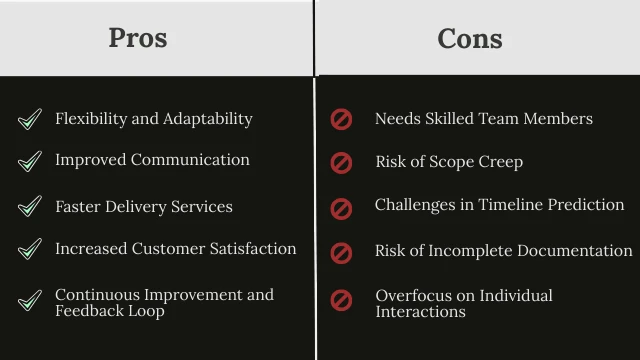
Now you understand the what is Agile methodology and its principle, let’s understand the pros and cons of Agile methodology for better decisions.
Pros of Agile Methodology
- Agile allows teams to respond to changes quickly and effectively.
- Agile promotes transparency, teamwork, and open communication among team members.
- By breaking down projects into manageable tasks and delivering increments regularly, Agile enables faster time-to-market and quicker returns on investment.
- It prioritizes customer involvement and feedback throughout the development process.
- Agile methodology encourages continuous learning, adaptation, and improvement.
Cons of Agile Methodology
- Agile relies on skilled and self-managed teams, It may be challenging for inexperienced or untrained team members.
- The iterative nature of Agile can sometimes result in scope creep.
- Agile’s focus on flexibility and responding to change makes it challenging to estimate project timelines accurately.
- While Agile values collaboration, it may prioritize individual interactions over comprehensive documentation and processes.
- Agile advocates for working software over comprehensive documentation.
Read Also: Employee Retention Strategies for Small IT Businesses
What is Waterfall Methodology?
Now after the Agile Methodology, Let’s understand the Waterfall methodology, It is a sequential design process, often used in software development processes, where progress is seen as flowing steadily downwards (like a waterfall) through several phases.
The Waterfall Methodology phases generally include:
- Requirements
- Design
- Implementation
- Verification
- Maintenance
Each phase must be finished before the subsequent phase can start, ensuring no overlap occurs. This linear and systematic approach is ideal for projects with well-defined requirements and scope.
History of Waterfall Methodology
The Waterfall Methodology was first introduced as a software development model by Dr. Winston W. Royce in 1970. Royce’s model aimed to provide a clear framework for developing large-scale software systems, and over time, it evolved to become a standard practice in the industry
Before that, it originated in the manufacturing and construction industries, where sequential processes were essential. Now in 2024, Waterfall is typically used in industries where changes are costly or impractical, such as construction, manufacturing, and some engineering projects. According to the top industry experts, It works best when project requirements are well understood and unlikely to change.
Pros and Cons of Waterfall Methodology
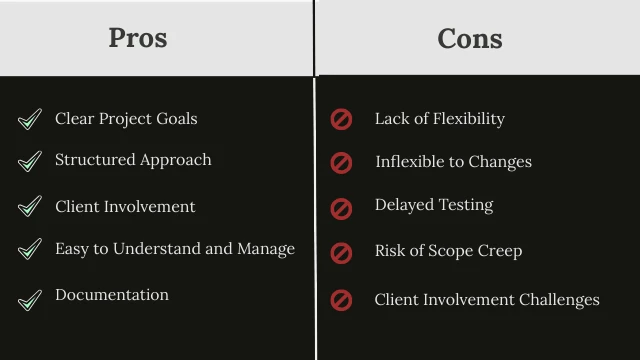
Now Let’s understand and know the advantages and disadvantages of waterfall methodology.
Pros of Waterfall Methodology
- The methodology provides a clear outline of project goals and deliverables right from the beginning.
- With well-defined phases, teams can focus on one aspect at a time.
- Clients are involved early in the process, providing valuable feedback.
- The linear nature of the Waterfall method makes it easy to understand and manage.
- Extensive documentation at each phase ensures transparency and helps in tracking progress.
Cons of Waterfall Methodology
- Once the waterfall phase is completed, it’s challenging to make changes without affecting the entire project timeline and task.
- Changes requested during development can lead to delays and additional costs.
- Testing occurs towards the end of the project, leading to potential issues being identified late in the process.
- The fixed scope can lead to scope creep.
- While client involvement is an advantage, it can also be a challenge if clients are not actively engaged or lack clarity in their requirements.
Read Also: Signs of Poor Quality in Web Development Services
Agile vs Waterfall: A Comparative Analysis
Understanding their differences is crucial for selecting the appropriate methodology for a project. Here’s a more detailed table comparing the Agile and Waterfall methodologies:
-
Fundamental Approach
Agile:
- Agile is an iterative and incremental approach, emphasizing flexibility and customer satisfaction.
- It breaks the project into small, manageable units called sprints or iterations, typically lasting 2-4 weeks.
- Each sprint delivers a potentially shippable product increment, allowing for continuous feedback and adjustments.
Waterfall:
- Waterfall is a linear and sequential approach, often referred to as a traditional methodology.
- It follows a fixed sequence of phases: requirements, design, implementation, verification, and maintenance.
- Every phase should be completed before the next steps, with minimal flexibility for changes once a phase is completed.
-
Project Management
Agile:
- Agile projects are managed through iterative cycles, with regular reassessments and adjustments.
- It involves continuous collaboration between cross-functional teams and stakeholders.
- Project requirements and solutions evolve through team collaboration and customer feedback.
Waterfall:
- Waterfall projects follow a strict sequence, where each phase has specific deliverables and reviews.
- Project management is more rigid, focusing on meeting predefined requirements and deadlines.
- Changes are difficult to implement once the project is in progress due to the linear nature of the methodology.
-
Flexibility and Adaptability
Agile:
- Agile is highly flexible and adaptable to changes, with a strong focus on responding to feedback.
- It allows for changes in requirements, even late in development, promoting a dynamic and evolving process.
Waterfall:
- Waterfall is less flexible, as changes are challenging to implement once a phase is completed.
- The waterfall method is best suited for projects with well-structured requirements that are unlikely to change.
-
Documentation and Process
Agile:
- Agile values working software over comprehensive documentation but still requires sufficient documentation for knowledge sharing.
- The process is adaptive, with an emphasis on delivering value through iterative progress.
Waterfall:
- Waterfall places significant emphasis on documentation, providing a detailed record of each phase.
- The process is well-documented and structured, ensuring clear guidelines and expectations.
-
Customer Involvement
Agile:
- Agile involves continuous customer collaboration and feedback throughout the project lifecycle.
- Regular demonstrations and reviews ensure that the product aligns with customer needs and expectations.
Waterfall:
- Waterfall typically involves the customer primarily at the beginning (requirements phase) and the end (delivery phase).
- There is less ongoing customer involvement, which may lead to misalignment with customer needs if requirements change.
-
Risk Management
Agile:
- Agile manages risks by delivering small, incremental updates, allowing for early detection and resolution of issues.
- Regular testing and feedback cycles help identify and mitigate risks promptly.
Waterfall:
- Waterfall’s risk management is front-loaded, with extensive planning and analysis during the initial phases.
- Risks that emerge during later phases can be more difficult and costly to address.
-
Team Structure and Roles
Agile:
- Agile promotes cross-functional, self-organizing teams with a focus on collaboration and shared responsibility.
- Roles such as Scrum Master, Product Owner, and Development Team are integral to Agile practices.
Waterfall:
- Waterfall typically follows a more hierarchical team structure with clearly defined roles and responsibilities.
- Teams work sequentially, with hand-offs between different functional areas (e.g., developers to testers).
Popular Agile Frameworks:
Here are some of the most widely adopted Agile frameworks:
-
Scrum
Overview
Scrum is perhaps the most well-known and widely used Agile framework. It is designed for teams of 3-9 members who break their work into actions that can be completed within time-boxed iterations, called sprints (typically 2-4 weeks long).
Key Roles
- Product Owner: Responsible for maximizing the value of the product by managing the product backlog.
- Scrum Master: Facilitates the Scrum process, ensuring the team adheres to Agile methodology principles and best
- Development Team: Cross-functional group that works on the product increment.
Artifacts
- Product Backlog: A product backlog is a prioritized list of all potential requirements and features for a product.
- Sprint Backlog: The set of product backlog items selected for the sprint, plus a plan for delivering the product increment and realizing the sprint goal.
- Increment: The sum of all the product backlog items completed during a sprint and all previous sprints.
Benefits
- Improved collaboration and communication
- Enhanced flexibility and adaptability
- Continuous delivery of value
-
Kanban
Overview
Kanban is a visual system that allows teams to visualize and manage their work using a board with task cards. It focuses on continuous delivery and optimizing the flow of work without overloading team members.
Core Principles
- Visualize Work: Using a Kanban board to represent work items and their status.
- Limit Work in Progress (WIP): Setting limits on the number of work items in each stage of the process.
- Manage Flow: Monitoring and optimizing the flow of work through the system.
- Make Process Policies Explicit: Defining and sharing the policies that guide the process.
- Implement Feedback Loops: Regularly review the process and make adjustments.
- Improve Collaboratively: Using data and team insights to improve the process.
Benefits
- Increased transparency
- Improved efficiency
- Greater flexibility in managing work
-
Lean
Overview
Lean is an Agile framework derived from Lean manufacturing principles, focusing on delivering value to the customer while minimizing waste. Lean motive is to continuous improvement and respect for people.
Core Principles
- Value: Define what is valuable to the customer or clients.
- Value Stream: Map all steps in the value stream and eliminate steps that do not create value.
- Flow: Ensure a smooth flow of work.
- Pull: Produce work only when there is demand.
- Perfection: Continuously improve the process.
Benefits
- Reduced waste and inefficiencies
- Enhanced customer satisfaction
- Continuous improvement culture
-
Extreme Programming (XP)
Overview
Extreme Programming is an Agile framework that focuses on technical excellence and customer satisfaction. It involves frequent releases in short development cycles, which improves productivity and introduces checkpoints where new customer requirements can be adopted.
Core Practices
- Test-Driven Development (TDD): Test-Driven Development (TDD) is the practice of writing automated tests before writing the actual code, to drive the implementation and ensure code quality.
- Pair Programming: Two programmers work together at one workstation.
- Continuous Integration: Integrating and testing changes frequently.
- Refactoring: Continuously improving the codebase without changing its behavior.
- Small Releases: Releasing small, functional pieces of software frequently.
- Customer Collaboration: Close and continuous collaboration with the customer.
Benefits
- Higher quality code
- Increased customer satisfaction
- Reduced project risk
-
SAFe (Scaled Agile Framework)
Overview
SAFe is designed to scale Agile practices across large enterprises. It provides a structured approach for large-scale Agile projects, integrating principles from Lean, Agile, and product development flow.
Core Components
- Team Level: Focuses on Agile teams and their iterations.
- Program Level: Manages multiple Agile teams through Agile Release Trains (ARTs).
- Portfolio Level: Aligns strategy with execution, managing multiple programs.
- Value Streams: Aligns teams to deliver value in a sequence of steps.
Benefits
- Alignment across large organizations
- Improved productivity and quality
- Faster time to market
Popular Waterfall Frameworks
Let’s explore some popular Waterfall frameworks that organizations frequently use to ensure structured project execution.
-
PRINCE2
Overview
PRINCE2 (Projects IN Controlled Environments) is a highly structured project management methodology widely used in the UK and internationally. It provides a structured approach for effectively managing projects from initiation to completion.
Key Features
- Defined Stages: Projects are divided into manageable stages, each with its own set of objectives and deliverables.
- Roles and Responsibilities: Clearly defined roles for everyone involved in the project, from project managers to team members.
- Focus on Business Justification: Ensuring that projects have a clear business case and benefits are realized.
- Tailorability: PRINCE2 can be tailored to suit the specific needs of the project and the organization.
Benefits
- Improved project control and governance
- Enhanced risk management
- Clear communication and accountability
-
SDLC (Systems Development Life Cycle)
Overview
The Systems Development Life Cycle (SDLC) is a framework used in software engineering to guide the development of information systems. It is a systematic process that includes a series of steps for planning, creating, testing, and deploying an information system.
Key Phases
- Planning: Defining the scope and purpose of the system.
- Analysis: Gathering and analyzing requirements.
- Design: Creating the architecture of the system.
- Implementation: Coding and building the system.
- Testing: Verifying that the system works as intended.
- Deployment: Rolling out the system to users.
- Maintenance: Ongoing support and updates.
Benefits
- Structured approach to software development
- Improved project visibility and control
- Enhanced documentation and clarity
-
Waterfall SDLC
Overview
Key Phases
- Requirement Gathering and Analysis: Documenting what the system should do.
- System Design: Creating the system architecture based on requirements.
- Implementation: Implementation is the phase of writing the code and building the software system.
- Integration and Testing: Combining and testing all components of the system.
- Deployment: Installing the system for user operation.
- Maintenance: Providing ongoing support and updates.
Benefits
- Clear milestones and deliverables
- Ease of management and tracking
- Well-defined documentation at each stage
-
PMBOK (Project Management Body of Knowledge)
Overview
The PMBOK framework, developed by the Project Management Institute (PMI), outlines a set of standard terminology and guidelines for project management. It is not a strict Waterfall framework but provides a comprehensive set of best practices that can be applied in a Waterfall manner.
Key Processes
- Initiating: Defining and authorizing the project.
- Planning: Planning involves defining the project’s scope, goals, and approach.
- Executing: Executing is carrying out the tasks and activities outlined in the project plan.
- Monitoring and Controlling: Tracking project performance and making necessary adjustments.
- Closing: Finalizing all activities to formally close the project.
Benefits
- Comprehensive and detailed guidance
- Applicable to various project types
- Enhanced consistency and standardization
-
V-Model
Overview
The V-Model (Validation and Verification Model) is an extension of the Waterfall model that emphasizes validation and verification at each stage of development. It ensures that testing occurs simultaneously with development, enhancing product quality.
Key Phases
- Requirements Analysis: Defining what the system should do.
- System Design: Planning the system architecture.
- Architectural Design: Defining modules and their interactions.
- Module Design: Detailed design of individual modules.
- Coding: Writing the actual code.
- Unit Testing: Testing individual modules.
- Integration Testing: Testing the interaction between modules.
- System Testing: Testing the entire system as a whole.
- Acceptance Testing: Verifying the system with user requirements.
Benefits
- Enhanced focus on quality and testing
- Early detection of defects
- Structured approach to development and validation
Get Affordable Development Services from GraffersID!
Are you searching for reliable and cost-effective development services? Look no further than GraffersID! Our team of experienced professionals is ready to turn your ideas into reality. Whether you need web development, mobile app development, software solutions, or a dedicated remote development team, we’ve got you covered. Contact us today to discuss your project and let us help you achieve your goals within your budget. Get in touch with GraffersID for top-notch development services that won’t break the bank!
Conclusion
Choosing between Agile and Waterfall depends on the specific needs of a project and the industry context. Agile offers flexibility and customer-centricity, making it ideal for projects where requirements may evolve. Waterfall provides a structured, predictable approach, suitable for projects with well-defined requirements. Understanding the key differences between these methodologies helps in making an informed decision that aligns with project goals and stakeholder expectations.
FAQs
1. Which methodology is better for small projects?
Agile is often better for small projects due to its flexibility and iterative approach, allowing for quick adjustments and continuous delivery of value.
2. Can Agile and Waterfall be combined?
Yes, some projects use a hybrid approach, combining Agile’s flexibility with Waterfall’s structured planning to benefit from both methodologies.
3. What are the main challenges of Agile?
Agile can face challenges such as scope creep, less predictability in costs and timelines, and the need for a highly collaborative and disciplined team.
4. What are the main challenges of Waterfall?
Waterfall can be inflexible, making it difficult to accommodate changes once the project is underway. It also risks the late discovery of issues due to its end-phase testing approach.
5. How to decide which methodology to use?
Consider the project’s complexity, requirements stability, customer involvement, and industry context. Agile suits dynamic, evolving projects, while Waterfall fits well-defined, stable projects.
